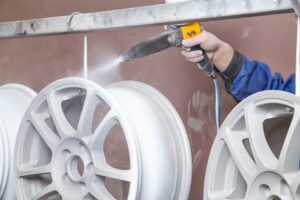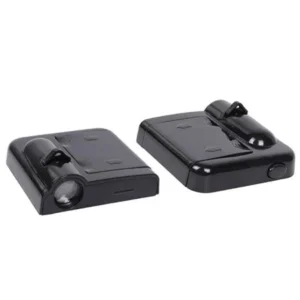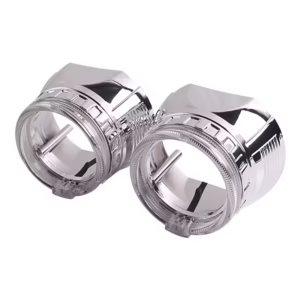Discover how interior coating protects your car’s interior from wear, UV damage, stains, and more. Learn about the benefits, application process, and maintenance tips for keeping your car’s interior pristine.
Introduction
Maintaining the interior of your car is just as important as protecting its exterior. Interior coatings provide a protective layer that shields the interior surfaces from wear and tear, UV damage, stains, and other daily hazards. This comprehensive guide delves into the importance of interior coating, its benefits, application process, and tips for maintaining a pristine car interior.
What is Interior Coating?
Interior coating is a protective treatment applied to the surfaces inside your vehicle, including leather, fabric, plastic, and metal. This coating creates a barrier that helps repel stains, resist UV damage, and reduce wear and tear, thereby preserving the interior’s appearance and extending its lifespan.
Types of Interior Coatings
There are several types of interior coatings, each suited to different materials and needs:
- Ceramic Coatings: These provide a durable, hydrophobic layer that protects against stains and UV damage. They are ideal for leather and plastic surfaces.
- Polymer Coatings: These coatings offer excellent protection and are easy to apply, making them suitable for various surfaces.
- Fabric Coatings: Specially formulated to protect cloth seats and carpets from spills and stains, fabric coatings create a water-resistant barrier.
Benefits of Interior Coating
The advantages of interior coating are extensive:
- Longevity: Interior coatings can significantly extend the lifespan of your car’s interior surfaces.
- Protection: They shield against UV rays, stains, dirt, and daily wear and tear.
- Aesthetic Enhancement: Coatings maintain the original look and feel of interior materials, keeping them looking new.
- Ease of Maintenance: Treated surfaces are easier to clean, as spills and stains do not penetrate the material.
Comparing Interior Coating to Other Methods
When compared to other interior protection methods, interior coatings stand out in several ways:
- Durability: Coatings last longer than traditional fabric protectors and conditioners.
- Protection Levels: They offer superior protection against a wider range of hazards, including UV rays and stains.
- Cost: While initially more expensive, the long-term benefits and reduced need for frequent reapplications can make coatings more cost-effective.
- Maintenance: Coated interiors require less frequent and less intensive cleaning.
Preparing Your Car for Interior Coating
Proper preparation is crucial for the success of interior coating application. This involves several steps:
- Cleaning: Thoroughly vacuum and clean all interior surfaces to remove dirt and grime.
- Decontamination: Use appropriate cleaners to remove any existing stains or residues.
- Surface Preparation: Ensure surfaces are dry and free from any contaminants that might interfere with the coating’s adhesion.
Application Process
The application of interior coating can be done professionally or as a DIY project. Here is a step-by-step guide for both methods:
Professional Application
- Inspection: A professional will inspect the interior surfaces for any imperfections.
- Preparation: The interior is cleaned and decontaminated.
- Application: The coating is applied evenly to all surfaces in a controlled environment.
- Curing: The coating is left to cure for the recommended time, ensuring optimal protection.
DIY Application
- Preparation: Follow the same cleaning and decontamination steps as for professional application.
- Application: Apply the coating using the provided applicator, ensuring even coverage.
- Buffing: After a specified time, buff the surfaces with a microfiber cloth to remove excess coating.
- Curing: Allow the coating to cure as per the manufacturer’s instructions.
Tools and Materials Needed
For a successful interior coating application, you will need:
- High-quality interior coating product
- Applicator pads
- Microfiber towels
- Vacuum cleaner
- Interior cleaners specific to the surface material
Curing Time and Conditions
The curing time for interior coating varies depending on the product and environmental conditions. Optimal curing conditions include a temperature range of 60-75°F (16-24°C) and low humidity. During the curing period, avoid using the treated surfaces or exposing them to contaminants.
Maintenance of Interior Coating
Maintaining a coated interior involves regular, gentle cleaning and avoiding harsh chemicals. Use a pH-neutral interior cleaner and soft cloths to prevent damage to the coating. Avoid scrubbing or using abrasive tools that could degrade the protective layer.
Common Mistakes to Avoid
To ensure the longevity and effectiveness of your interior coating, avoid these common mistakes:
- Applying the coating on a dirty or contaminated surface
- Skipping the surface preparation step
- Using abrasive cleaners or tools during maintenance
- Ignoring the manufacturer’s instructions for curing time and conditions
Myths and Misconceptions
Interior coating is often surrounded by myths and misconceptions. Some common ones include:
- Myth: Interior coating makes surfaces bulletproof.
- Fact: While it offers excellent protection, it is not invincible.
- Myth: Once applied, no further maintenance is needed.
- Fact: Regular cleaning is essential to preserve the coating’s effectiveness.
- Myth: Interior coating is a one-time application.
- Fact: Although long-lasting, it may require reapplication after several years.
Cost Analysis
The cost of interior coating can vary based on factors such as the quality of the product, the size of the vehicle, and whether the application is professional or DIY. Professional applications can range from Kshs. 2000 to Kshs. 5000, while DIY kits are typically between Kshs. 3,000 and Kshs. 10,000.
DIY vs. Professional Application
Choosing between DIY and professional interior coating depends on several factors:
- Skill Level: Professional application ensures expert results, while DIY requires careful attention to detail.
- Cost: DIY is more affordable but may lack the durability and finish of a professional job.
- Time: Professional application is quicker, with the entire process handled by experts.
Interior Coating for Different Materials
Interior coatings are suitable for a variety of materials:
- Leather: Protects against UV damage, stains, and wear.
- Fabric: Creates a water-resistant barrier against spills and stains.
- Plastic: Shields against UV damage and makes cleaning easier.
- Metal: Prevents corrosion and maintains the original finish.
Environmental Impact
Interior coatings are generally considered eco-friendly. They reduce the need for frequent cleaning with harsh chemicals, thereby minimizing environmental impact. Additionally, the longevity of the coatings means less frequent reapplications, further reducing waste.
Frequently Asked Questions
How long does interior coating last?
Professional-grade coatings can last several years, while DIY options typically last 1-2 years.
Can interior coating be applied to all surfaces?
Yes, interior coatings can be applied to leather, fabric, plastic, and metal surfaces.
Does interior coating prevent stains?
It helps repel stains and makes cleaning easier, but it does not completely prevent all stains.
Can I apply interior coating myself?
Yes, there are DIY kits available, but professional application ensures optimal results.
Is interior coating worth the cost?
For many car owners, the protection and aesthetic benefits justify the initial investment.
What should I avoid after applying interior coating?
Avoid using harsh chemicals and abrasive tools on coated surfaces.
Real-Life Testimonials
Many car owners have experienced the transformative benefits of interior coating. Alex, a car enthusiast, shares, “After applying interior coating, my car’s seats look and feel like new, and cleaning spills is a breeze.” Emma adds, “The UV protection is amazing! My dashboard has stayed in perfect condition despite constant sun exposure.”
Conclusion
Interior coating provides an exceptional solution for protecting and preserving your car’s interior. Whether you choose a professional application or a DIY approach, understanding the process and benefits of interior coating will help you make an informed decision and keep your vehicle’s interior looking its best for years to come.




